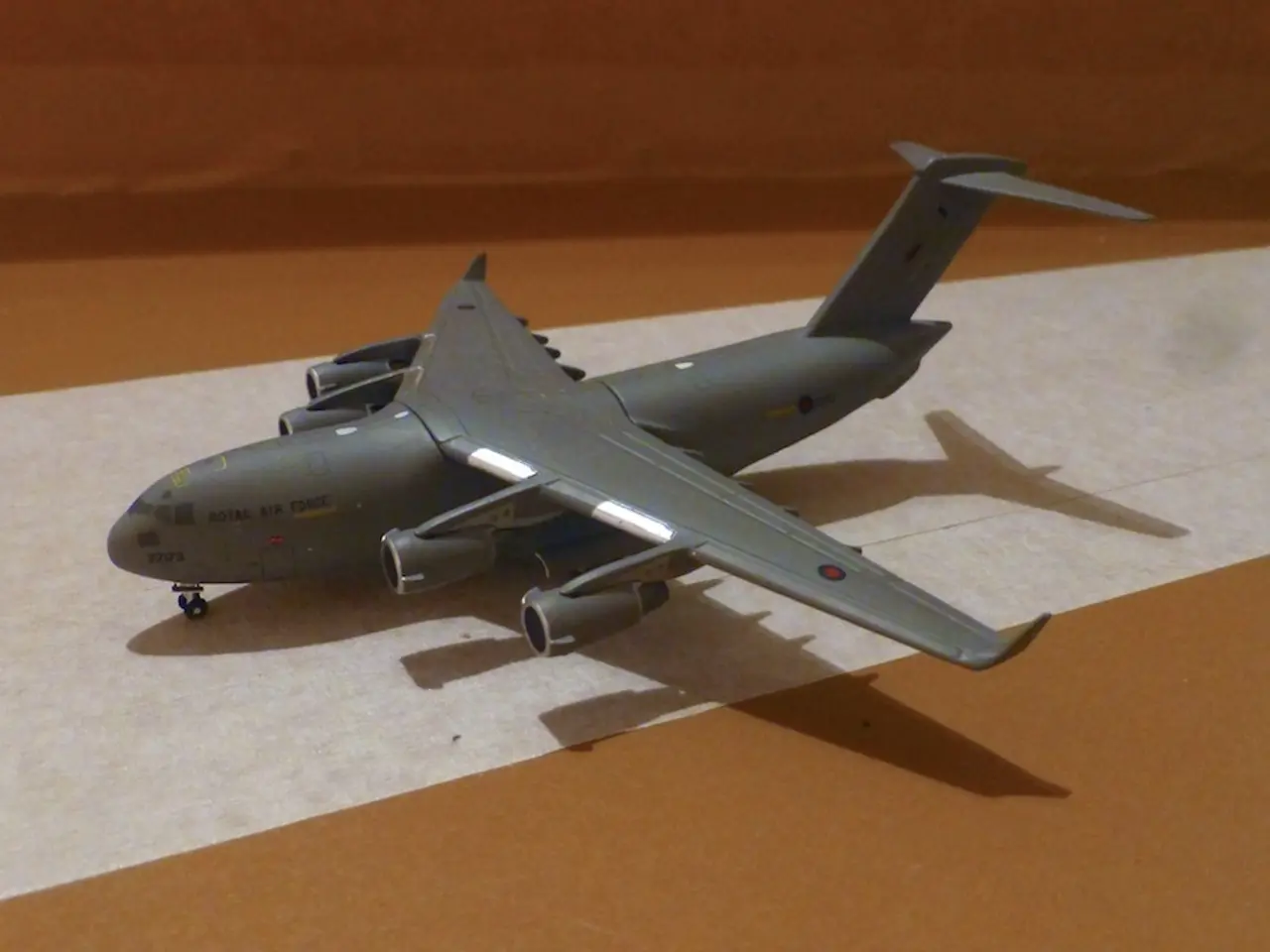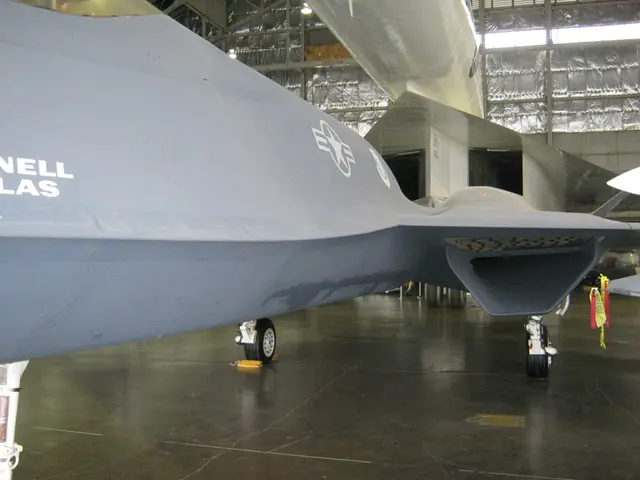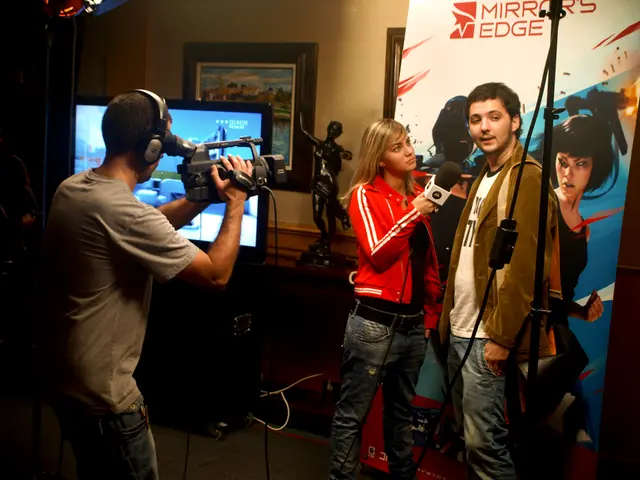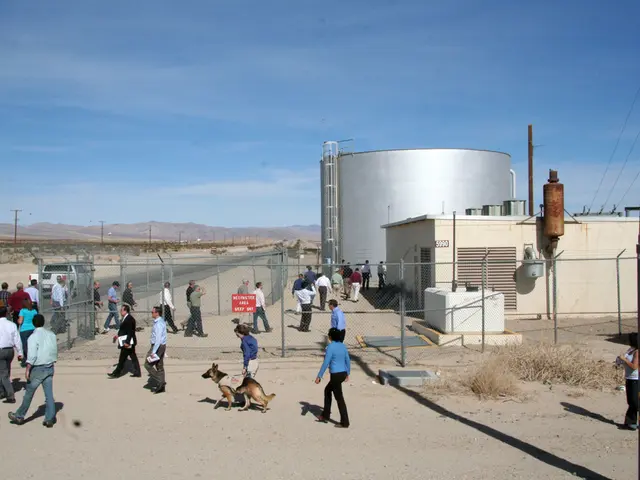Vought's Experimental Aircraft V-173, Nicknamed "The Flying Pancake"
====================================================================
The Vought V-173, popularly known as the "Flying Pancake," was a groundbreaking aircraft designed by Charles H. Zimmerman, an American aeronautical engineer. Born in Olathe, Kansas, USA in 1908, Zimmerman worked for the aerospace company Vought as an experimental aircraft designer [6].
In 1942, the V-173 made its first successful flight. This unique aircraft, completely made of a wing with the cockpit located at the front, was originally developed as a proposal to the U.S. Navy for use as a fighter plane on aircraft carriers [4]. The V-173 required an uplift of about 15 degrees for efficient horizontal takeoff and featured short takeoff and landing capabilities [7].
However, the aircraft was not without its challenges. The tire placement for the landing gear was problematic due to its design, and the limited field of view of the pilot made taking off and flying inefficient and dangerous [5]. Despite these issues, the V-173 demonstrated good maneuverability and unique aerodynamic properties [3].
After its first flight, the V-173 underwent further development as an experimental aircraft. Despite its success during the mid-1940s, the V-173 never entered mass production or operational service [1][3][5]. The propellers of the V-173 needed to be larger for efficient speeds, necessitating a higher uplift of the nose [5].
The U.S. Navy signed a contract with Vought for the continuity of the development of V-173. However, two years after its first flight, the contract for the development of the V-173 was canceled in 1944 [1]. Undeterred, Zimmerman tried to continue the development of the V-173 with his own funds [5].
The cancellation of the V-173 project did not mark the end of Zimmerman's innovative designs. Lessons learned from the V-173 led to the more advanced Vought XF5U-1, a full-scale fighter prototype that incorporated similar design principles. The XF5U-1 aimed to combine VTOL (vertical takeoff and landing) and high-speed performance but faced technical challenges and was eventually canceled after World War II ended [3].
Today, the V-173 is preserved and displayed at the Frontiers of Flight Museum in Dallas, serving as a historical example of innovative experimental aviation [2]. Despite its failure to transition into a production aircraft, the V-173 remains a technical curiosity and a milestone in radical aircraft design exploration during World War II [1][2][3][5].
For more information about the Vought V-173 "Flying Pancake," visit the Vought website at https://www.vought.org/products/html/v-173.html or Wikipedia at https://en.wikipedia.org/wiki/Vought_V-173. To learn more about Charles H. Zimmerman, visit his Wikipedia page at https://en.wikipedia.org/wiki/Charles_H._Zimmerman.
References:
- https://en.wikipedia.org/wiki/Vought_V-173
- https://www.vought.org/products/html/v-173.html
- https://www.history.navy.mil/research/library/online-reading-room/title-list-alphabetically/v/vought-v-173-flying-pancake.html
- https://www.airspacemag.com/flight-tests/vought-v-173-flying-pancake-180966285/
- https://www.airspacemag.com/daily-planet/vought-v-173-flying-pancake-180966285/
- https://en.wikipedia.org/wiki/Charles_H._Zimmerman
- The Vought V-173, famously called the "Flying Pancake," marked a significant contribution to aviation history, designed by Charles H. Zimmerman, a notable figure in the aerospace industry.
- The first successful flight of the V-173 in 1942, despite its unique design and challenges, showcased the advancements in technology and the innovative spirit of the aviation sector.
- The cancellation of the contract for the V-173's development in 1944, while a setback, did not hinder Zimmerman's continued efforts in the field, as evident in his creation of the more advanced Vought XF5U-1.
- Today, the V-173 is exhibited as a historical artifact at the Frontiers of Flight Museum in Dallas, serving as a testament to the finance and industry investments that drove aviation's radical design explorations during World War II.








